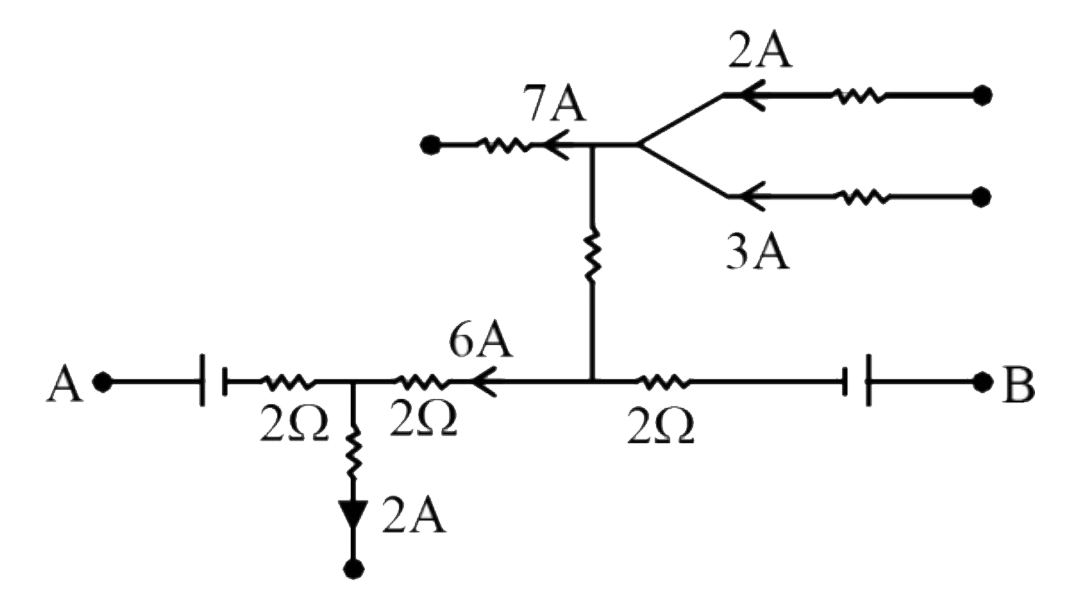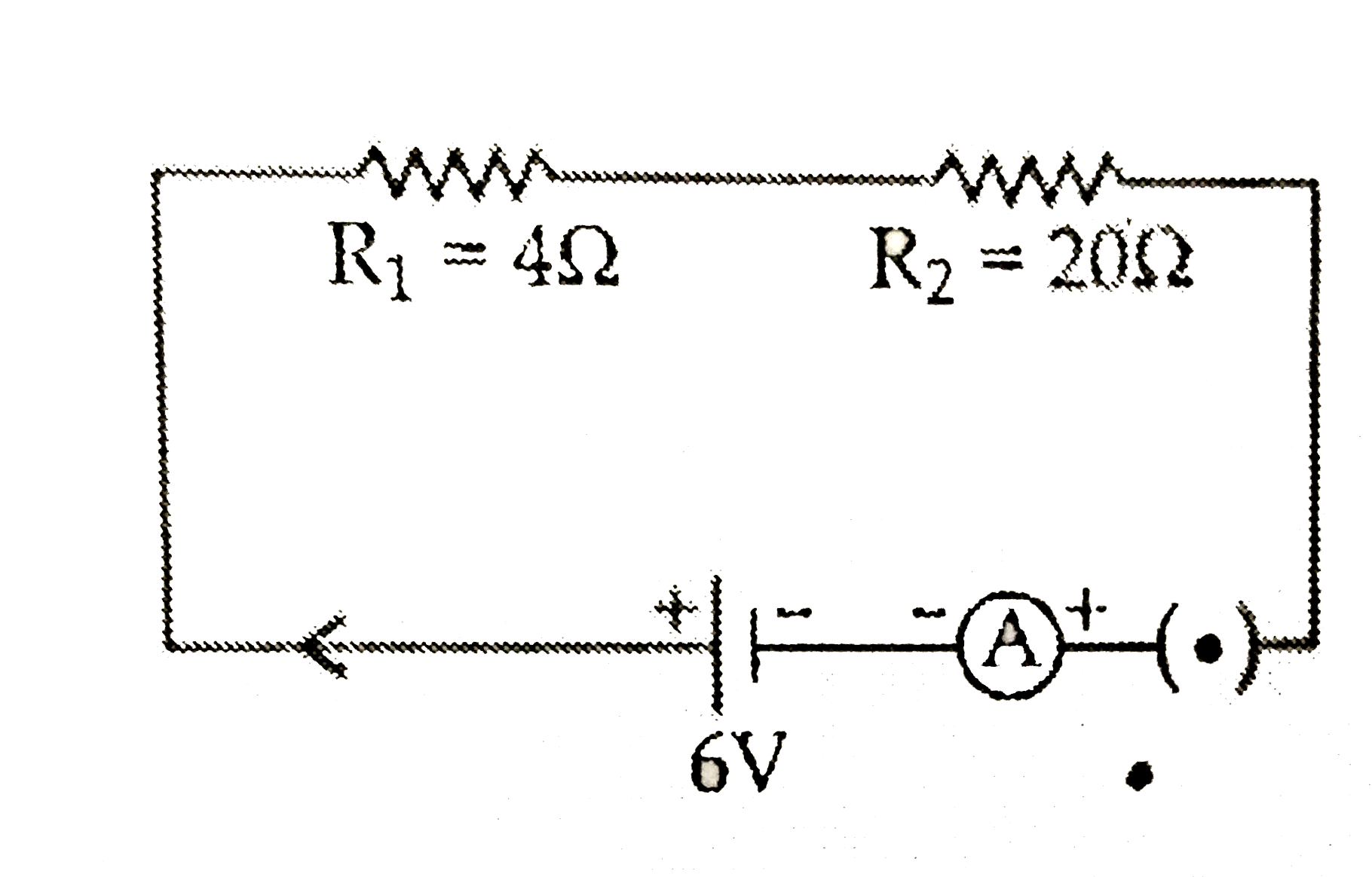What is meant by electric circuit ? Why does electric current start flowing in a circuit the moment circuit is complete ? When do we say that the potential difference across a conductor in a circuit is 1 volt ?
Calculate the potential difference between the two terminals of a battery if 12 joules of work is done in transferring 2 coulombs of charge.
⋅ A continuous conducting path consisting of wire and other resistances (like electric bulb, etc.) and a switch, between the two terminals of a cell or a battery along which an electric current flows is called an electric circuit.
⋅ It is the potential difference between the ends of the wire which makes the electric charges (or current) to flow in the wire.
The potential difference between two points is said to be 1 volt if 1 joule of work is done in moving 1 coulomb of electric charge from one point to another.
Thus, 1 volt =1joule1coulomb or 1 volt =1J1C or 1 J/C
⋅V=? W=12J Q=2C
Now, V=WQ=12J2C=6 volts
Similar Questions
In the given circuit, with steady current, calculate the potential difference across the capacitor and the charge stored in it.
View SolutionA battery of emf 2.0V and internal resistance 0.10Ω is being charged with a current of 5.0A. Find the potential difference between the terminals of the battery?
View Solution
Knowledge Check
When a current of 2 A flows in a battery from negative to positive terminal, the potential difference across it is 12 V. If a current of 3 A flowing in the opposite direction produces a potential difference of 15 V, the emf of the battery is
A12.6VB13.2VC13.5VD14.0V
Calculate the value of resistance R in the circuit shown in the figure so that the current in the circuits is 0.2A. What would be the potential difference between the points B and E ?

View SolutionIn the circuit of figure, the current in 4Ω resistance is 1.2A , what is the potential difference between B and C?

View Solution
In the above circuit diagram emf of two batteries are equal , then the potential difference VA–VB between terminals A and B will be
View SolutionCalculate the value of the resistance R in the circuit shown in the figure so that the current in the circuit is 0.2 A. What would be the potential difference between points B and E?

View SolutionIn the circuit shown, the current through the 4Ω resistors is 1amp when the points P and M are connected to a dc voltage source. The potential difference between the points M and N is.
 .
.
View SolutionIf in the circuit shown below, the internal resistance of the battery is 1.5Ω and VP and VQ are the potential at P and Q respectively, what is the potential difference between the point P and Q?

View SolutionIn the given circuit, calculate -

(a) the total resistance of the circuit,
(b) the current through the circuit, and
(c) the potential differences across R1andR2
View Solution
